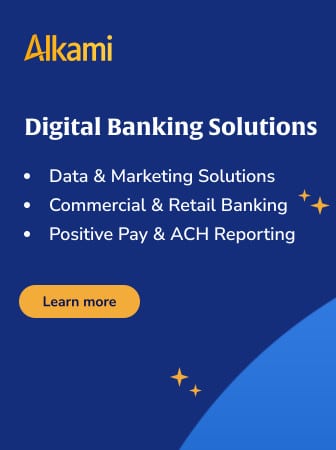Big data and digital analytics are creating new opportunities for financial institutions to revolutionize their approach to marketing. It’s now possible to understand consumers at an individual level and deliver a highly targeted experience with timely, relevant offers that boost conversion rates. To do this effectively, financial marketers have to be cautious, because of the staggering amount of data available and the time and resources it takes analyze and act on it. Big data yields a massive sea of data where you can drown if you aren’t sure what you’re doing.
And it’s only getting more complex. Today, 88% of digital banking consumers use two or more channels to interact with their financial institution. The way consumers engage with financial brands has become a perpetual moving target that spans both offline and online interactions. It increasingly common for consumers to start a relationship at a bank or credit union branch, then utilize a combination of channels including social media, smartphones, tablets and PCs. It’s increasingly challenging for banks to turn all that data into genuine customer insights, and even more difficult to determine how they should respond and what they need to do differently.

The unfair advantage for financial brands.
Offering aggressive financial marketing strategies custom-built for leaders looking to redefine industry norms and establish market dominance.

Creating A Community with CQRC’s Branch Redesign
Find out how SLD helped CQRC Bank to create the perfect harmony of financial services, local culture, and the human touch in their branch transformation.
Read More about Creating A Community with CQRC’s Branch Redesign
Because of this, the demand for digital/web analytics have exploded. Not long ago, simply measuring activity on a bank’s website was sufficient — page views, unique visitors, time on site, exit pages, etc. These days, there is enough data available for financial marketers to paint a holistic picture of consumers — acquisition, engagement and retention across all digital channels.
Wouldn’t you like to know if a consumer looking for a home equity line of credit started her search on her mobile phone and then completed it on her computer at home, or vice versa? And how many people start the process online and finish at one of your branches? This stuff is pure gold, and can play a vital role in defining your integrated marketing strategy. But mining for these kinds of insights requires the integration of available data from across multiple channels, including all digital avenues.
Big box retailers know how to do it. And banks today are starting to emulate these retailers with respect to how cross-channel data can be leveraged when marketing to consumers. For example, financial marketers can now use “real-time triggers.” What does that mean? It means when a consumer starts looking at loan information on your website, you can respond immediately with relevant information and offers. Banks on the digital forefront are already gleaning insights into what customers are doing at the exact moment of engagement — what offer or link they just clicked, coupled with knowledge about what they’ve done in the past, such as their historical usage data and/or offline actions (stored on a CRM solution) — to deliver tailored cross-sell or up-sell offers while those customers are still on their sites. Yep, we’re talking about dynamic marketing — in real time.
Banks and credit unions can also use data to learn more about where consumers are in their lives, and adjust marketing messages accordingly. Adapting your marketing focus to lifestyle — major life events such as buying a house or setting up accounts for college-age children — is one of the most powerful approaches you can take.
For example, instead of using a shotgun to blanket everyone with the same credit card offer, you can now access data that reveals which customers have a child headed off to college, in which case a student loan or student credit card would be tailored and appropriate. The less targeted and less relevant your marketing is, the more likely it is that your promotions will be ignored. Why pay more for the shotgun approach when you can hit a bullseye every time?
Key Takeaways
It’s essential to segment your customer database and target them with relevant content. Once you’re able to figure out what consumers want, then you can deliver personalized, meaningful content across any digital channel at any point in their journey, but this takes a solution that combines data with technology.
Interpersonal relationships are still the heart of banking. It’s just that today, it no longer means only face-to-face interactions like it did back in the pre-internet era. Your digital channels can support and nurture these relationships, but you have to be testing your online experience (content, service, delivery) to find what’s working, what drives the highest conversion rates, and what doesn’t.
When your financial institution can deliver a personalized experience during every interaction — whether it be it in a branch, or online in any combination of smartphone, tablet and computer — you’ll generate more customer loyalty… and trigger more conversions.







